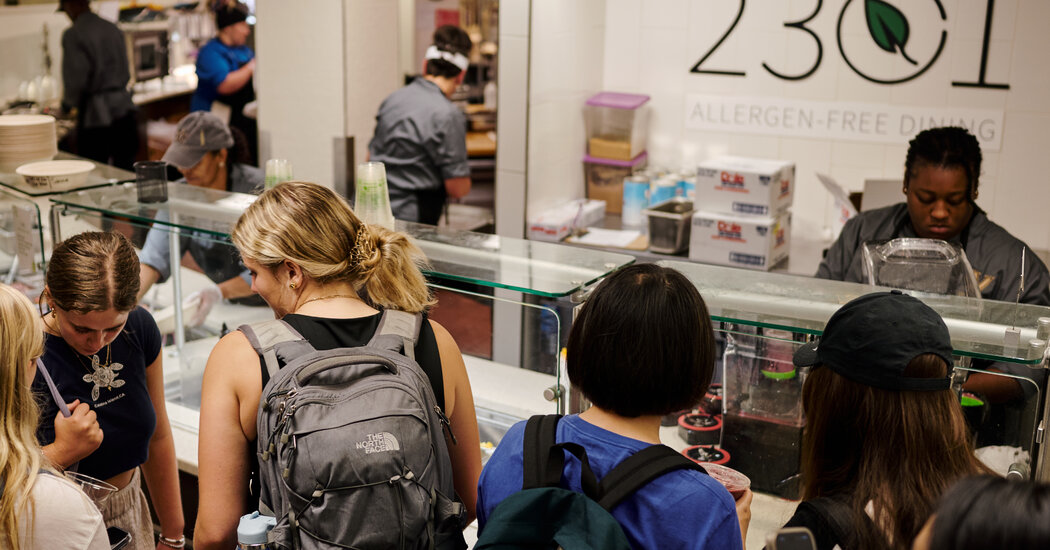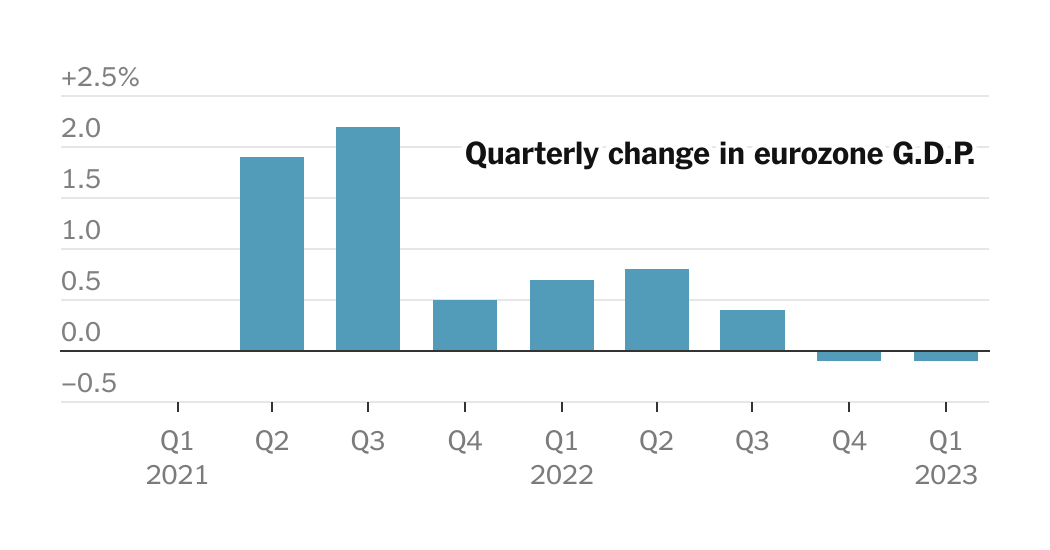An Island-to-Island Yacht Cruise in Croatia
As Croatians tell the story, the Greek hero Odysseus was shipwrecked and held captive on the Croatian island of Mljet. Visiting in May, I and six other sailors embraced the myth when the motor on our 54-foot yacht failed.
“Remember, Odysseus spent seven years on Mljet,” said Ivan Ljubovic, our captain. “We can do two nights.”
In the scheme of things, the clogged fuel filter that impeded our progress on a seven-night, island-hopping cruise from Split to Dubrovnik on a yacht — which the passengers helped sail — was minor. Though an engine, even on a sailboat, is vital for docking and sticking to schedules on becalmed days, most of my shipmates agreed that getting waylaid in a village with Roman ruins on a turquoise bay was an acceptable fate.
I had been resigned to what were, in my mind, worse inconveniences when I had signed up for the trip last November. Then, the tour operator G Adventures had put several trips on sale over the Black Friday weekend. Its best deals were in the off-season, which meant potentially chilly weather and closed restaurants and attractions. But leaving in late April for seven nights of island hopping at roughly $1,300 — after a 30 percent discount — was too tempting to pass up.
My cousin Kim agreed and we made plans to pack rain gear and meet in Split to test the budget waters.
‘Everything between is an adventure’
Little about the itinerary was published pre-departure and none of it was firm.
“Split and Dubrovnik are fixed,” said the captain, who would pilot the ship solo and double as our guide, on our first day. “Everything between is an adventure.”
It started with the Sauturnes, a handsome Kufner yacht with four snug guest cabins, four economical bathrooms where the retractable faucet doubled as a shower spigot, and a spacious galley. Our “crew,” a mix of Australians and Americans ranging from 18 to 75 — all of whom had also jumped on the promotional pricing — spent most of the time atop the boat, where foam mattresses invited sunbathing and a cockpit awning provided shade.
The weather, which turned out to be sunny and comfortably cool, was not our greatest concern. The G Adventures website had mentioned well-known islands, including beachy Brac and Vis, which played a convincing Greek idyll in the movie “Mamma Mia 2.” But since many places would be closed in the shoulder season, we would proceed, according to the captain, based on the dictates of the weather and conditions on shore.
Meals were not included, which meant finding open restaurants was critical. For shipboard breakfasts and lunches, we each chipped in 50 euros (about $54) for communal groceries, which we shopped for at local markets. At night, we would dine at restaurants; G Adventures advised budgeting $250 to $325 for the week, which was accurate, though we often splurged on Croatian wine (a carafe of house red averaged $15).
Small ports
After the frenzy of grocery shopping and moving into the bunk-bedded cabin Kim and I shared, we experienced the Zen of sailing as the ship set off on a sunny morning for 43-mile-long Hvar, the longest and purportedly sunniest island in Croatia.
Neighboring islands drifted past as the wind patterned the sea in shifting ripples and ruffles. A flock of shearwaters soared by at eye level.
Within a few hours, the ridgelines of steep Hvar appeared, revealing terraced lavender fields and olive orchards. Motoring down a long, narrow inlet, we arrived in Stari Grad, a village of stone homes with terra cotta roof tiles, as travelers had since 384 B.C., when Greek sailors from the island of Paros settled here.
Our mooring provided a front-row view of fishing boats and cafes animating the waterfront. Stari Grad’s attractions, including the Greek ruins of Faros and a 17th-century Venetian cathedral, had yet to open for the season, but we relished exploring the old quarter’s narrow lanes and deserted plazas.
From the waterfront, an aerobic 20-minute hike up a steep hill crowned by a giant white cross offered views over Stari Grad and the plains beyond, a UNESCO World Heritage Site of fourth-century agricultural fields, with stone walls circumscribing grapevines and olive orchards.
That evening, we visited them to reach Konoba Kokot, a farm restaurant that specializes in “peka,” a kind of barbecue in which meat cooks under an iron lid piled with hot coals. The family that runs it opened in the preseason, welcoming us with bracing shots of rakija, a local herbal liquor. At a long table under an arbor, we gorged on homemade goat cheese, wild boar pate and, from the hearth, roast lamb, veal and octopus with limitless jugs of red and white wine for 35 euros a person.
Starry nights
Small ships are unmatched at getting into small ports, but a yacht trip is also a little like camping, starting most mornings with D.I.Y. instant coffee. Marinas offered free bathhouses with showers.
Cool temperatures apparently deterred the celebrity-filled mega yachts, which are known to anchor in the town of Hvar on the south shore of Hvar island. Our captain declared it the “Mykonos of Croatia” as we motored by the port bustling with visitors carrying shopping bags and cones of gelato.
With clear weather in the forecast, we moored in an undeveloped cove east of town. The mooring belonged to the owners of Moli Onte restaurant, who ferried us to land on a motorized dingy, allowing us enough time before dinner to visit the fortress above Hvar and have an Ozujsko beer on St. Stephens Square, the largest in the region of Dalmatia.
Back on board, with no artificial light to wash out the night sky, we hit the upper deck for stargazing. As my shipmates peeled off to bed, I grabbed a blanket and beanie and bedded down under the stars for the evolving show, periodically waking to catch the drama of the moon rising, reflected in the still water.
Little Dubrovnik
Fingers of gray rock reached down to meet sloping vineyards along Hvar’s south coast as we departed for its neighbor, Korcula. On our longest day of sailing, five hours, I welcomed the chance to play first mate, manning the lines on the jib sail.
To break up the trip, Captain Ljubovic navigated to a quiet cove off the Peljesac Peninsula where the Caribbean-blue waters, cloudless sky and sandy bottom convinced us to jump in despite numbing sea temperatures.
Fifteenth-century walls ring the historic center of Korcula, earning it the nickname “Little Dubrovnik.” Past the stone gates carved with a winged lion representing the empire of Venice, which controlled much of the Adriatic after the 13th century, narrow alleys led to ornate churches and mansions. There was no better history trip than getting lost in the web of pedestrian lanes. Or so we told ourselves as we passed the purported home of Marco Polo, still closed preseason.
Along the seafront walls, restaurants served pizza and seafood under lights strung in the pines and we caught sunset from a former turret, now converted into Massimo Cocktail Bar, which requires patrons to climb a ladder to the rooftop, a caution against second rounds.
The most romantic port of the trip was also the rowdiest, at least in the marina, which was hosting a Polish sailing regatta. When I headed for the showers at 6 a.m. the next morning, I found a group still cheerfully dancing atop a yacht littered in empty booze bottles and crushed potato chips.
Marooned on Mljet
We left Korcula on strong 20-knot “jugo” or south winds and Captain Ljubovic unleashed the sails, saying “You paid for a sailing vacation, not a motorboat.”
As we tacked back and forth toward Mljet, the boat heeled at a queasy angle and we took face shots of ocean spray.
On Mljet, where the western end of the island is home to Mljet National Park, we rented bikes (10 euros) to ride a lung-busting route over the park’s mountain spine. On the other side, we cycled around a pair of inland lakes and took a boat trip to a 12th-century monastery built on an island in one of them (park admission, 15 euros).
Docked in the still sleepy town of Polace, we heard tales of high season, when up to 100 yachts anchor in the bay and members of the band U2 were once seen biking in the park. After a brief shower, the town glimmered at sunset and the restaurant Stella Maris welcomed us with grilled sea bass (25 euros) and prawns (20 euros).
“I’m so glad I chose this time, because I don’t do crowds,” said my shipmate Nova Hey, 46, of Sydney, who was traveling with her 18-year-old daughter.
In the morning, I had the trail to the peak of Montokuc to myself. The roughly three-mile round-trip hike reached one of the highest points on the island, a rocky knob with stunning panoramas shared by a family of feral goats.
Not long thereafter, the Sauternes’ engine refused to turn over, stranding us in a national park on a remote island with no mechanics.
Teeming Dubrovnik
The next morning, Captain Ljubovic jimmied a fix but it didn’t last long and the engine died again, this time just opposite a cave on Mljet that we joked had to be the refuge of Odysseus.
After a morning of light sailing, a mechanic from the mainland arrived by speedboat and within an hour we were motoring toward the Franjo Tudman Bridge that spans the inlet to the Dubrovnik marina where hot showers awaited.
“Dubrovnik is the most expensive city in Croatia,” said Captain Ljubovic as we spent the last of our pooled money, 70 euros, hiring a taxi van to get us to and from the walled heart of the ancient city about 15 minutes away.
With two large cruise ships in port, Dubrovnik was teeming with visitors and the price to climb the stone walls that encircle the city was a sticker-shocking 35 euros. (In the ensuing two days Kim and I would spend post-cruise in the city, we bought the more comprehensive Dubrovnik Pass for 35 euros that included admission to the walls as well as several museums and public bus transportation.)
On our final evening, we measured the lack of crowds versus closed museums; perfect hiking weather versus swim-inviting water; ample dock space versus more restaurant choices — and felt we’d come out ahead sailing in the bargain season.
Follow New York Times Travel on Instagram and sign up for our weekly Travel Dispatch newsletter to get expert tips on traveling smarter and inspiration for your next vacation. Dreaming up a future getaway or just armchair traveling? Check out our 52 Places to Go in 2024.


